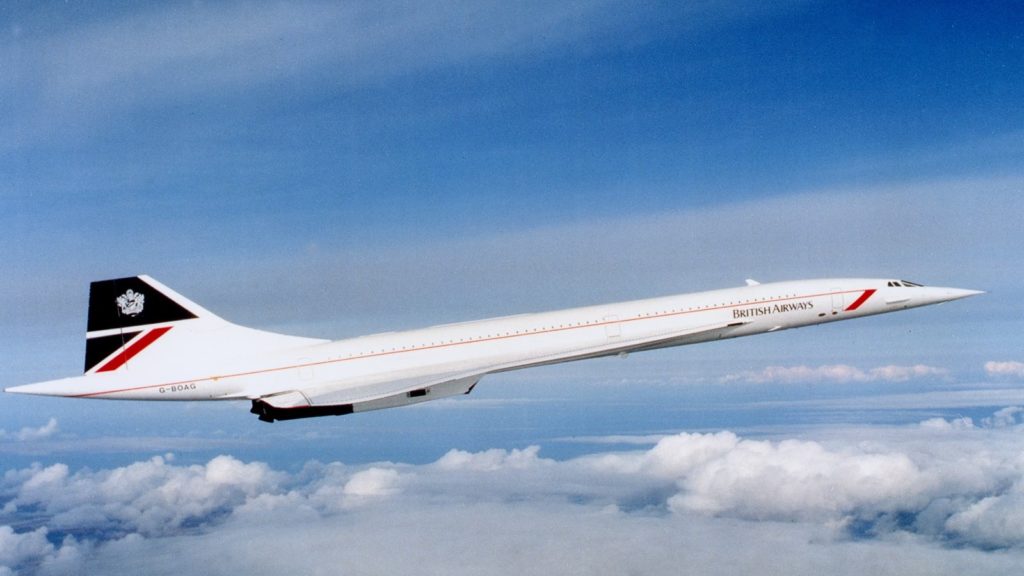Leeham News and Analysis
There's more to real news than a news release.
Bjorn’s Corner: Supersonic transport revival, Part 3
August 24, 2018, ©. Leeham News: In the last Corner we discussed how supersonic wave drag can be higher than any other drag for a blunt fuselage trying to fly at supersonic speeds. If we try to fly supersonically with a Dreamliner fuselage, the volume wave drag is four times as large as the whole Dreamliner drag when flying at its normal cruise speed.
Besides wave drag based on bodies volumes we also have wave drag when we angle lift surfaces like wings against air to create lift.
Supersonic lift wave drag
Like for the fuselage, the wave drag due to lift from the wings is an added drag on top of the normal drag due to lift, induced drag.
The drag is created when the wing redirects the air molecules downward to create lift. The shock waves which are created by the wing causes lift wave drag.
We are once again in the domain of “Bounce aerodynamics” as the air molecules have no idea a wing leading edge is coming. The pressure wave, which could make them move smoothly out-of-the-way around the wing, can’t give any pre-warning.
The pressure is traveling slower than the wing and therefore the leading edge is cutting like a knife-edge through the air, bouncing the air molecules to the side and downwards.
To create lift with as little bouncing as possible, the wings shall be thin and have a wide cord. Wingspan is not so important, as the speed is so high induced drag will be low even for a wing with a low aspect ratio.
A supersonic wing shall be thin. It shall have a low thickness compared with its cord length, like the Concorde wing in Figure 1.
Instead of the classical aspect ratio for a wing, which is the wingspan squared divided with the wing’s area, for supersonic wings we talk about the wing’s length aspect ratio which is the cord of the wing squared divided by the wing area.
If we halve the cord of the Concorde wing and keep the area the lift wave drag increases by 250% and passes the induced drag in size. With the normal Concorde wing, the lift wave drag is less than 25% of the induced drag during cruise.
Next Corner we will discuss why there is a drag hump when passing through Mach 1.



Hi Bjorn, want to share this link with fellow LNC readers. Photo of all six British Airways Concorde’s together.
http://c.newsnow.co.uk/A/951742408?-303:3665:3
Never before and never again.
They had no real idea of the work and cost involved in starting the Concorde project but any future project will be even harder as the way things are done now under current airworthiness and even using CAD makes a lot of the work back then unusable- even if the IP was available from blueprints. A mach 2 plane again is out of the question as it would be a lower speed compromise.
Then there is the cost, no board of company with shares traded would give the OK. You could probably get a flying 12- 15 seater prototype with the money the USAF is spending on the new Airforce One, but for a commercial venture I cant see any firm doing business jets now would even consider it as the risk is through the roof.
The Concorde had 2+2 Engines that made the Aircraft could handle a one engine surge up to a pretty high speed. A 2 Engine SSBJ is more sensitive to an inlet unstart and Engine surge making a severe yaw moment that the tail +rudder has to compensate including an engine shut down, a slowdown to subsonic speed and diversion to the nearest open aiport. An English Electric Lightning 2 Engine installation aviods this problem. The wing mounted 2 Engine SR-71 Engine surges at altitude might give a feeling for what passangers can expect in a twin engine SSBJ experiencing an engine surge.
In reality the twin engines on each wing , each had completely separate intakes, but the issue mentioned about the air flow issues was a major concern. Intake ramps were used to slow down the air from Mach 2 with every thing below that as well. While the Olympus was just a turbo jet they still had diverted air from intakes around the engine to ensure the entry airflow was just right. But of course it didnt go through the compressors, but just slowing the air would have produced quite a bit of compression.
All covered better than I could do here
https://www.heritageconcorde.com/air-in-take-system